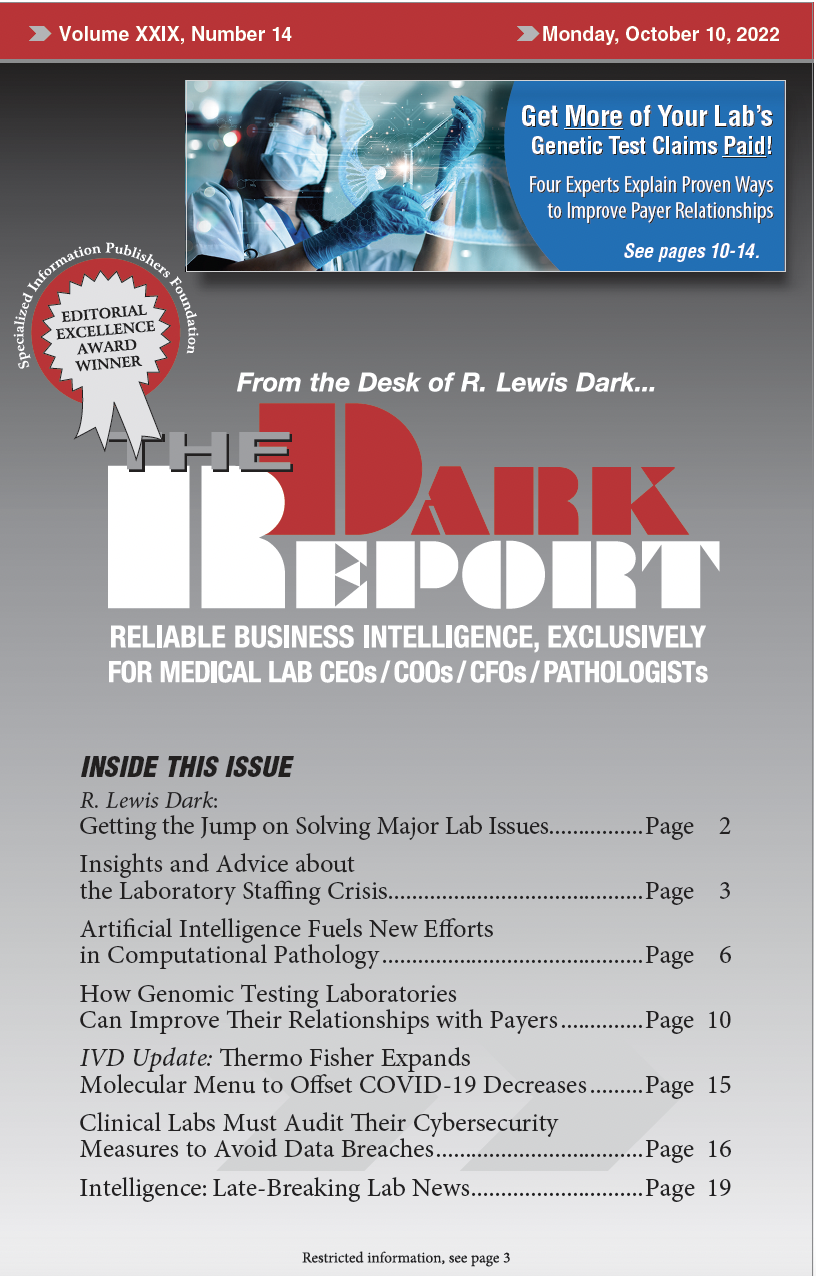This is an excerpt of a 2,215-word article in the October 10, 2022 issue of THE DARK REPORT. The full article is available to subscribers. CEO SUMMARY: For payers and health plans, it may be a matter of trust that initially ensures new and novel genomic test reimbursement. A panel of experts at the Executive War College offered insights on effective …
How Labs Can Improve Their Relationships with Payers for Genomic Test Reimbursement Read More »
To access this post, you must purchase The Dark Report.


